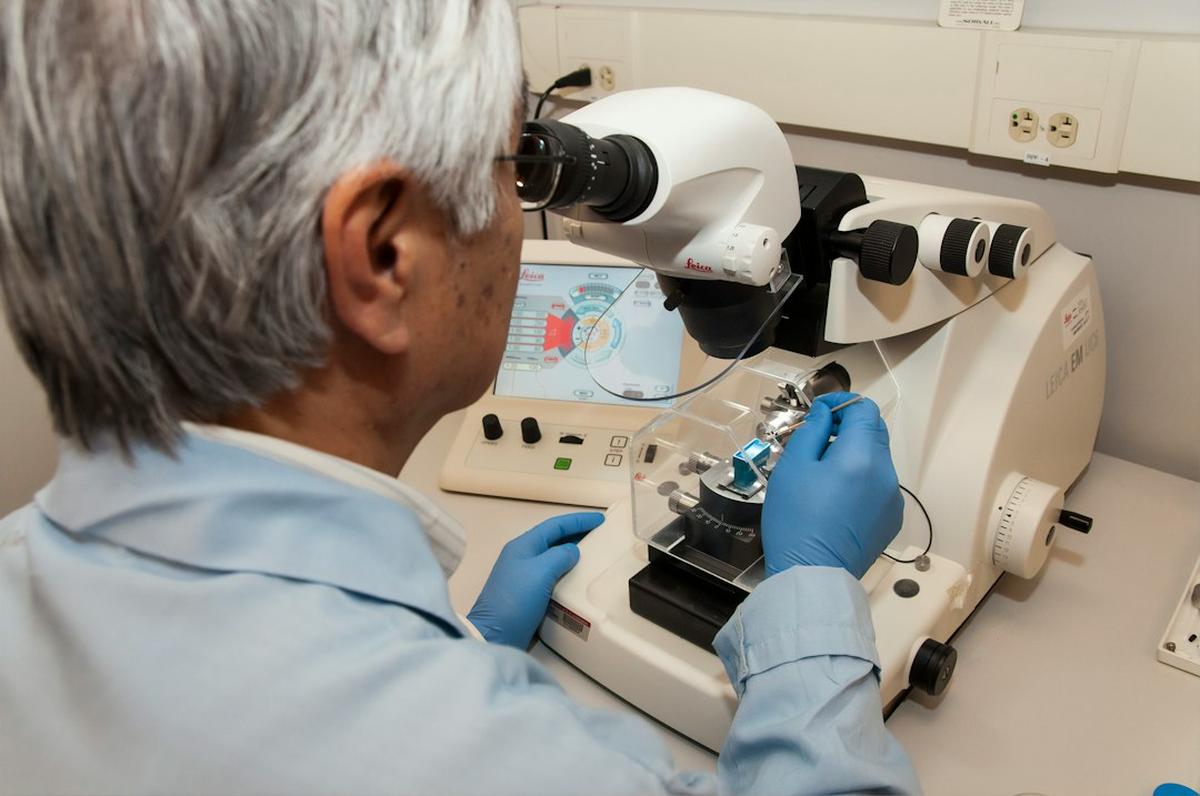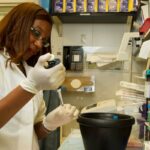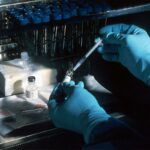DNA, the molecule that carries the genetic instructions for life, is a complex and intricate system. This microscopic structure is responsible for the development, functioning, growth, and reproduction of all known organisms and many viruses. One of the most fascinating aspects of DNA is its ability to repair itself, a critical function that maintains the integrity of the genetic code and ensures the continuity of life.
The importance of DNA repair in cellular function cannot be overstated. Without the ability to correct errors and repair damage, cells would accumulate mutations, leading to malfunction, disease, and ultimately death. This article aims to delve into the mysteries of DNA, exploring how it can repair itself and the implications of this process for human health and disease.
Understanding DNA Damage
Before we can fully appreciate the mechanisms of DNA repair, it’s essential to understand what causes DNA damage. DNA damage can occur due to a variety of factors, including exposure to harmful chemicals, radiation, certain viruses, and even normal cellular processes like replication and metabolism.
There are several types of DNA damage, such as base modifications, strand breaks, and crosslinks, each with unique impacts on cellular function. For instance, a single base modification might disrupt the genetic code, leading to the production of a faulty protein. On the other hand, a strand break could halt DNA replication, preventing cell division and growth.
The impact of DNA damage on cellular function is profound. If left unrepaired, DNA damage can lead to mutations, genomic instability, and cell death. In the long term, accumulated DNA damage and mutations can contribute to aging and diseases like cancer.
The Concept of DNA Repair
Given the potential consequences of DNA damage, it’s clear that DNA repair is a biological necessity. But how does DNA repair itself? The answer lies in a series of complex biochemical reactions that recognize, remove, and replace damaged DNA.
There are two fundamental mechanisms of DNA repair: base excision repair and direct reversal repair. Each mechanism is suited to repairing different types of DNA damage, and both are critical for maintaining the integrity of the genetic code.
DNA Repair by Removal of Damaged Bases
Base excision repair is a process that involves the removal of damaged bases from the DNA molecule. This process is initiated by enzymes called DNA glycosylases, which recognize and excise the damaged base. Following excision, the DNA backbone is cleaved, and the missing base is replaced by a correct one.
DNA polymerase plays a crucial role in the resynthesis of the excised region. This enzyme adds the correct base to the DNA molecule, guided by the undamaged complementary strand. Finally, the repaired DNA strand is sealed by an enzyme called DNA ligase.
While base excision repair is highly efficient, it has its limitations. For instance, it cannot repair damage that distorts the DNA helix, such as bulky adducts or crosslinks. For these types of damage, other repair mechanisms are needed.
DNA Repair by Direct Reversal of Damage
Direct reversal repair is a mechanism that corrects certain types of DNA damage without removing the damaged base. Instead, the damage is directly reversed by specialized enzymes. For example, the enzyme photolyase can repair UV-induced pyrimidine dimers, a common type of DNA damage caused by sunlight.
Direct reversal repair is highly efficient and accurate, as it does not involve the removal and replacement of bases. However, it is limited to repairing specific types of damage that can be directly reversed. Other types of damage, such as base modifications or strand breaks, require different repair mechanisms.
Comparing the Two DNA Repair Mechanisms
Both base excision repair and direct reversal repair play crucial roles in maintaining DNA integrity. The choice between these two mechanisms depends on the type of damage and the cellular context. For instance, base excision repair is often used to repair small, non-distorting base modifications, while direct reversal repair is suited for repairing UV-induced pyrimidine dimers.
The impact of the chosen repair mechanism on DNA integrity can be significant. For example, errors during base excision repair can lead to mutations, while unsuccessful direct reversal repair can result in persistent DNA damage. Therefore, the efficiency and accuracy of DNA repair mechanisms are critical for preventing genomic instability and disease.
Factors Influencing DNA’s Ability to Repair Itself
Several factors can influence DNA’s ability to repair itself. Genetic factors, such as mutations in DNA repair genes, can impair the repair process, leading to increased DNA damage and disease risk. Environmental factors, like exposure to radiation or harmful chemicals, can also affect DNA repair by causing additional damage.
Age is another factor that influences DNA repair capacity. As we age, our cells’ ability to repair DNA damage declines, leading to an accumulation of mutations and an increased risk of diseases like cancer.
The Role of DNA Repair in Disease Prevention
DNA repair plays a critical role in disease prevention. By correcting errors and repairing damage, DNA repair mechanisms prevent mutations and genomic instability, which are key drivers of cancer. Therefore, understanding and enhancing DNA repair could be a powerful strategy for cancer prevention.
DNA repair also plays a role in aging and neurodegenerative diseases. Age-related decline in DNA repair capacity can contribute to the accumulation of DNA damage in neurons, leading to neurodegeneration and diseases like Alzheimer’s. Thus, interventions that boost DNA repair could potentially slow aging and prevent neurodegenerative diseases.
Current Research and Future Directions in DNA Repair
Research on DNA repair has made significant advances in recent years, leading to a deeper understanding of the mechanisms involved and their role in disease. This knowledge has opened up new avenues for therapeutic applications. For instance, drugs that target DNA repair pathways are being developed for cancer treatment, and interventions that boost DNA repair are being explored for aging and neurodegenerative diseases.
Despite these advances, there is still much to learn about DNA repair. Future research will likely focus on uncovering the detailed molecular mechanisms of DNA repair, identifying new repair pathways, and exploring the interplay between DNA repair and other cellular processes. These efforts will not only enhance our understanding of this fundamental biological process but also pave the way for new therapeutic strategies.
Final Remarks
Final Remarks, DNA’s ability to repair itself is a fascinating and complex process that plays a crucial role in maintaining the integrity of the genetic code and preventing disease. While we have made significant strides in understanding this process, there is still much to unravel. The ongoing research in this field holds great promise for improving human health and combating diseases like cancer and neurodegenerative disorders.
Frequently Asked Questions
What causes DNA damage?
DNA damage can occur due to a variety of factors, including exposure to harmful chemicals, radiation, certain viruses, and even normal cellular processes like replication and metabolism.
What are the consequences of DNA damage?
If left unrepaired, DNA damage can lead to mutations, genomic instability, and cell death. In the long term, accumulated DNA damage and mutations can contribute to aging and diseases like cancer.
How does DNA repair itself?
DNA repairs itself through a series of complex biochemical reactions that recognize, remove, and replace damaged DNA. There are two fundamental mechanisms of DNA repair: base excision repair and direct reversal repair.
What are the limitations of DNA repair?
While DNA repair mechanisms are highly efficient, they have their limitations. For instance, base excision repair cannot repair damage that distorts the DNA helix, and direct reversal repair is limited to repairing specific types of damage that can be directly reversed.
What factors influence DNA’s ability to repair itself?
Several factors can influence DNA’s ability to repair itself, including genetic factors, environmental factors, and age. Mutations in DNA repair genes, exposure to harmful substances, and age-related decline in repair capacity can all impair DNA repair.
What is the role of DNA repair in disease prevention?
DNA repair plays a critical role in disease prevention by preventing mutations and genomic instability, which are key drivers of diseases like cancer and neurodegenerative disorders.
References:
- Lindahl, T. (1993). Instability and decay of the primary structure of DNA. Nature, 362(6422), 709–715.
- Friedberg, E. C., Walker, G. C., Siede, W., Wood, R. D., Schultz, R. A., & Ellenberger, T. (2006). DNA repair and mutagenesis. ASM Press.
- Hoeijmakers, J. H. (2009). DNA damage, aging, and cancer. The New England journal of medicine, 361(15), 1475–1485.








